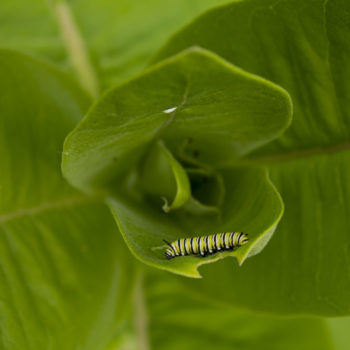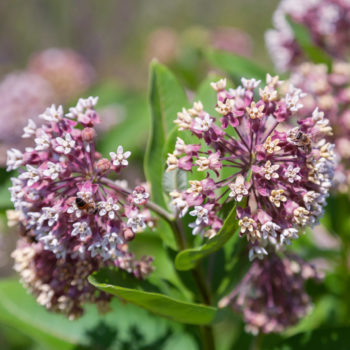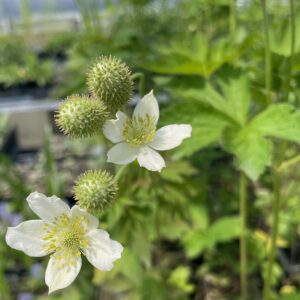| SUN | SOIL MOISTURE | HEIGHT |
|---|---|---|
|
Full Partial |
Medium Dry Dry |
5' |





| BLOOM | USDA ZONES | BLOOM COLOR |
|---|---|---|
|
|

|
The much-maligned Common Milkweed is a real workhorse in Monarch butterfly recovery efforts. Besides being a preferred hostplant for Monarch caterpillars this plant, once established, proves to be easy to grow but difficult to remove. To many in agriculture, Common Milkweed is a weed that has no place in their fields. This thinking has unfortunately played a role in the overall reduction in Monarch butterfly numbers. By planting milkweed in your home landscape you’re helping to offset this food deficit. “If you grow it, they will come” best describes the female Monarchs uncanny ability to find milkweed for her offspring.
Common Milkweed tends to be tall and spreads underground over time so think about giving it the room it wants. Don’t worry though if you’re short of room! We have other species like Butterfly Weed and Whorled Milkweed which are better behaved in the garden and which Monarchs readily lay their eggs upon. If you do have the space though Common Milkweed is a good plant and can serve as a reserve food source. As the summer progresses here in the nursery the caterpillars get bigger and the milkweeds would get smaller if we weren’t diligent in picking the caterpillars off the more “ornamental” milkweed species. We transfer them to one of several clumps of Common Milkweed growing wild around the nursery and they readily take to their new food source.
In the landscape Common Milkweed has large, fleshy leaves and has an overall coarse appearance. Pink flowers open for weeks and weeks and are attractive to many other species of native pollinators including flies, bees, bumblebees and beetles. At night a whole new cast of insect characters visit the flowers looking for pollen and nectar. Common Milkweed is, in fact, THE milkweed that most people think of when they hear the word “milkweed”. Please note that we have dozens of species of milkweeds that look quite different than Common Milkweed but are just as yummy to Monarch caterpillars! Take a moment to look at Butterfly Weed which has thin leaves and bright orange flowers and Whorled Milkweed which have very thin leaves and white flowers. Whorled Milkweeds look like young pine trees as they are sizing up. Each of these only get a couple of feet tall.

| Unreported | |
 | Unreported (Absent for area) |
| Native | |
 | Native in state (NA Native and Present in state, but not Present in county) |
 | Native in state and Present in county (NA Native and Present in state, and Present in county) |
 | Rare in state and Present in county (NA Native and Rare in state, and Present in county) |
 | Extirpated/Historic in state/Native (NA Native and Reported in county) |
 | Adventive or Introduced state (NA Native and Adventive in state, and Present in county) |
| Exotic Occurrences | |
 | Exotic in state (Exotic and Present in state, but not Present in county) |
 | Exotic in state and Present in county (Exotic and Present in state, and Present in county) |
| Other | |
 | Noxious in state (Noxious in state, and Present in county) |
 | Questionable Presence (cross-hatched) |
An easily grown milkweed for dry areas in full sun. Can become weedy over time due to spreading via underground rhizomes. De-podding the plants after flowering helps to reduce its spread.
Please note that Riverside Native Perennials (RNP) only ships our potted “35” product via USPS. We generally can have your plants boxed up and ready to go within two or three days. All other products including our flat of plugs, 1-gallon and 3-gallon containers are only available for nursery pick up in Delaware, OH. For large orders of any of our products we can arrange shipping at an extra cost. Please contact the nursery for additional information.
It’s important to note that when we send plants to you, presentation is everything! We recognize that you’re expecting healthy plants to arrive safely on your doorstep ready to be planted and that is what we’re selling. Further, we want you to know that while we are a fully licensed and inspected perennial nursery in the state of Ohio…we are in Ohio! That means we are subject to Ohio weather. The average frost-free date for our area is May 15. So even though you may live in Florida or California your plants are growing under Ohio conditions and we do not heat our greenhouses due to the expense. Our plants may be slightly delayed but again it’s because we’re in a Zone 5 area. Because we ship nationwide, we ship plants at all times of the year. If it’s winter in Ohio, you’ll be getting dormant plants. If it’s spring or summer in Ohio, you’ll be getting plants of various sizes that are actively growing. Plants shipped during fall in Ohio may be dormant or may be heading towards dormancy. This is all natural and we do not try to modify or prolong the growing season other than to grow them in an unheated greenhouse. Even in an unheated greenhouse our plants are much further along and growing well early in the spring than if they were planted outside in Zone 5. If you would like additional information about sizes for a particular species, please contact us via email.
In 2021 RNP partnered with a shipping professional to design and develop a shipping system that could reasonably be expected to survive the USPS mail room and transportation process. After several design sessions and going back to the drawing board on more than a couple of occasions we created a shipping box system that, to us, is bulletproof. It is strong, lightweight and, to date, has not failed in shipping nearly 150 packages of plants to all corners of the country.
Once selected from our greenhouse benches, your plants are placed into a small plastic bag to maintain moisture during shipping. To keep the soil in the pot we created a cardboard insert that perfectly fits into the top of our 35 containers. The insert has a cutout that surrounds to plant stem without damaging it. The plastic bag and insert are secured by two rubber bands. Each bagged plant is then placed into an individual corrugated cardboard box which perfectly fits the 35 container, and which locks it in place so that it will not move during transit. Four individual boxes are then placed into another, even heavier duty corrugated cardboard master shipping box. The whole effect is that of double boxing your plants. They are safe and secure for the long trip to your home landscape!
The system only works with 4 individual boxes being packed into a single master shipping box so we encourage you to buy four plants or a multiple of four plants. You can buy less than four plants but we will need to send all the cardboard for four plants in order for the shipping system to succeed as designed.




